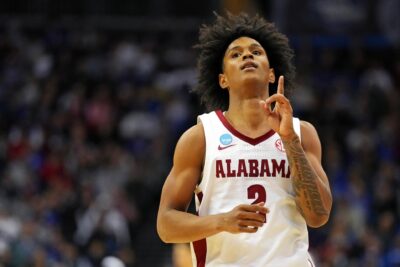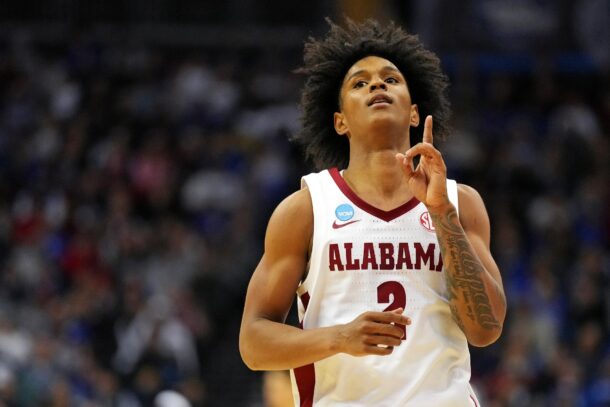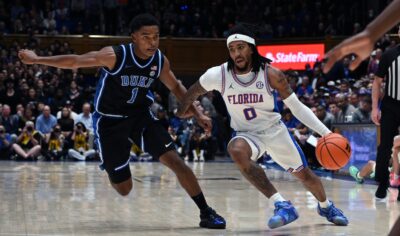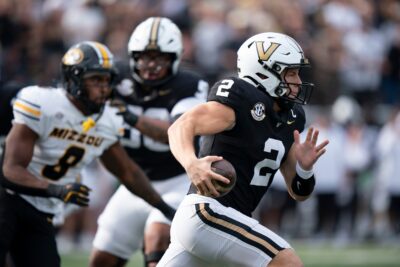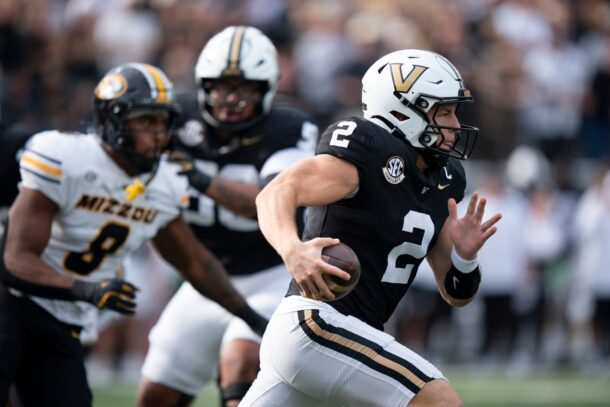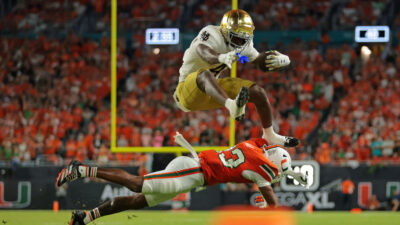Gurley joins growing list of SEC stars suffering knee injuries
By Ethan Levine
Published:
Todd Gurley returned from a four-game suspension with something to prove against Auburn last weekend. His punishing running style left the Tigers defense helpless, as he amassed 138 yards midway through the fourth quarter while splitting carries with teammate Nick Chubb.
Unfortunately, Gurley’s physical, downhill running style also cost him the rest of what should be his final season of college football.
With less than six minutes left in the game, Gurley took a carry between the tackles and ran for 10 yards before planting awkwardly and falling to the ground. The play seemed innocent enough, but after a few moments Gurley remained on the ground writhing in pain.
He never got up, and he’ll likely never handle another carry as a Georgia Bulldog.
It was announced the following day that Gurley had suffered a torn ACL in his left knee, prematurely ending his junior season and setting up quite the roadblock on his path to the NFL.
Related: Todd Gurley out for remainder of season with torn ACL
The only thing worse than the timing of Gurley’s injury is the increased frequency with which ACL injuries are occurring in the SEC.
In a report done by CBS Sports last October, 13 SEC players had suffered season-ending ACL tears with a month still remaining in the season, more than any other conference in the country.
Nine of the SEC’s 14 teams were effected by an ACL tear during the 2013 season, while only one other conference (the ACC) had more than seven players suffer torn ACLs for the season.
So what does this tell us? It’s obvious, but the takeaway is that college football is more violent than ever, especially in the SEC. Even in an age where medical science is reaching new heights seemingly every day, and where college and pro athletes are more comparable to finely-tuned machines than actual humans, ACL injuries are becoming more frequent each and every year.
At 6-foot-1 and 226 pounds, Gurley is one of the greatest physical specimens around, and at age 20 he’s in the prime of his athletic life. But even he could not avoid a fatal knee injury in less than three full seasons of college football, and the same can be said for a number of other stars throughout the conference in recent years.
Here’s a list of just some of the stars from the SEC who have succumbed to ACL tears since the 2012 season:
- Georgia’s Todd Gurley, Aaron Murray, Keith Marshall, Malcolm Mitchell and Justin Scott-Wesley (Georgia has had the worst luck with knee injuries, as you can tell)
- South Carolina’s Marcus Lattimore
- Florida’s Dominique Easley and Andre Debose
- LSU’s Zach Mettenberger
- Alabama’s Vinnie Sunseri
- Tennessee’s Jacob Gilliam
- Ole Miss’ DT Shackelford (twice)
Many of the athletes you see listed above are not only tremendously skilled football players, but also incredible athletes capable of things most of us are not. Logic would tell us that the best athletes in the country, currently in the best shape of their lives, should be able to avoid such a fatal knee injury.
But logic also tells us that when these gifted athletes are flying at one another at what seems like 100 miles an hour, collisions are bound to occur, and it’s easy to comprehend how injuries might result from those collisions.
Football in the SEC is faster and more physical than ever before, and these knee injuries are proof of that.
Plenty of players suffer knee injuries in the brutal collisions referenced above. Lattimore suffered his gruesome career-ending injury on a collision with two Tennessee defenders in 2012; Murray suffered his while being sacked in a 2013 win over Kentucky.
But plenty more, like Gurley, suffered their knee injuries on non-contact or light contact plays, indicating the injury was more the result of a collection of hits over a 1-4 year period. It seems avoiding the injury is becoming increasingly difficult for star athletes involved in a 12-game season (or even 16 games in the NFL). But recovering, rehabbing and returning from the injury has become more realistic than ever before.
Ultimately, college football is trending toward a greater number of ACL tears down the line, while medical science is trending toward a faster, more effective recovery process. Mettenberger tore his ACL late in the 2013 season, and he’s already taking snaps for an NFL team in 2014. Returning from the injury has actually become less difficult than avoiding the injury in the first place.
Gurley’s future remains bright despite the injury, but the future of college football, especially in the SEC, seems bleak for the health of the student-athletes on the field.
A former newspaper reporter who has roamed the southeastern United States for years covering football and eating way too many barbecue ribs, if there is such a thing.


